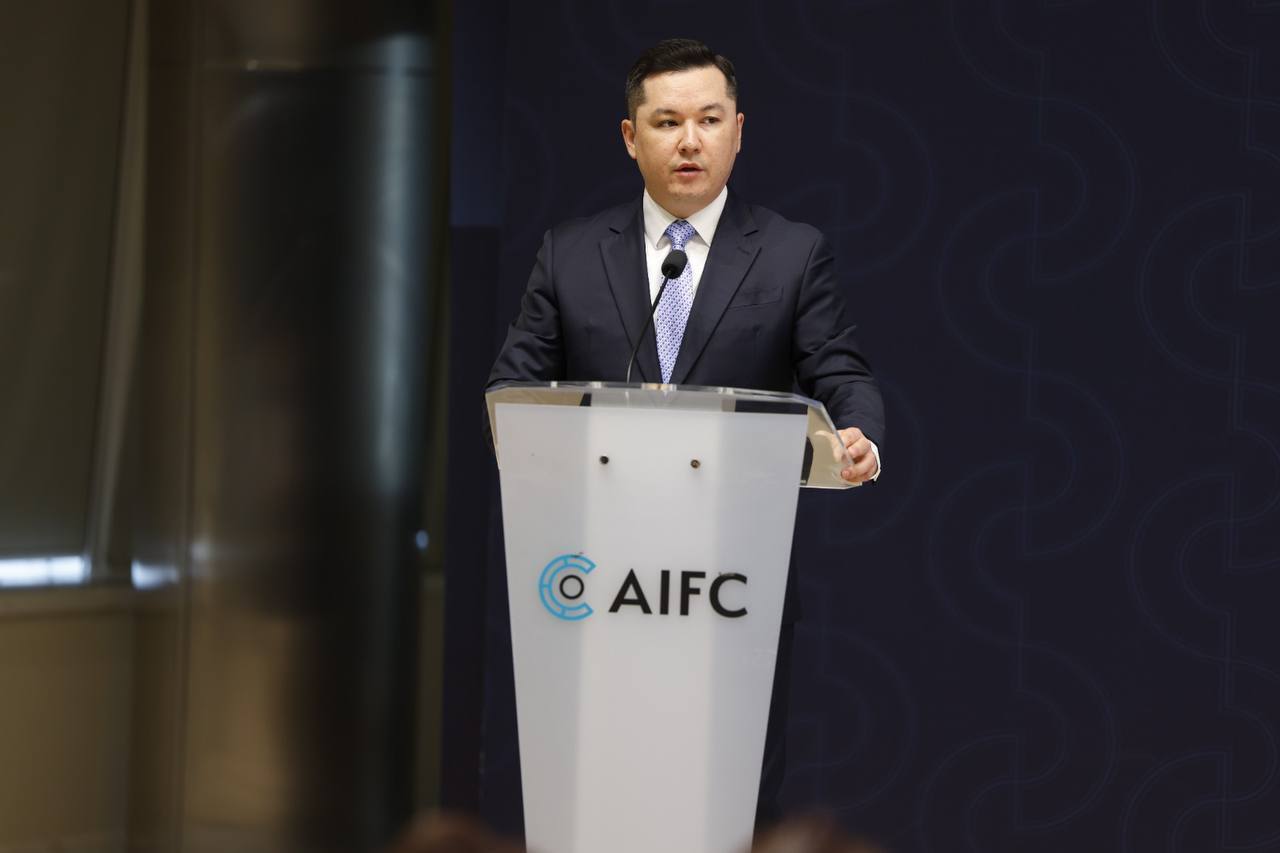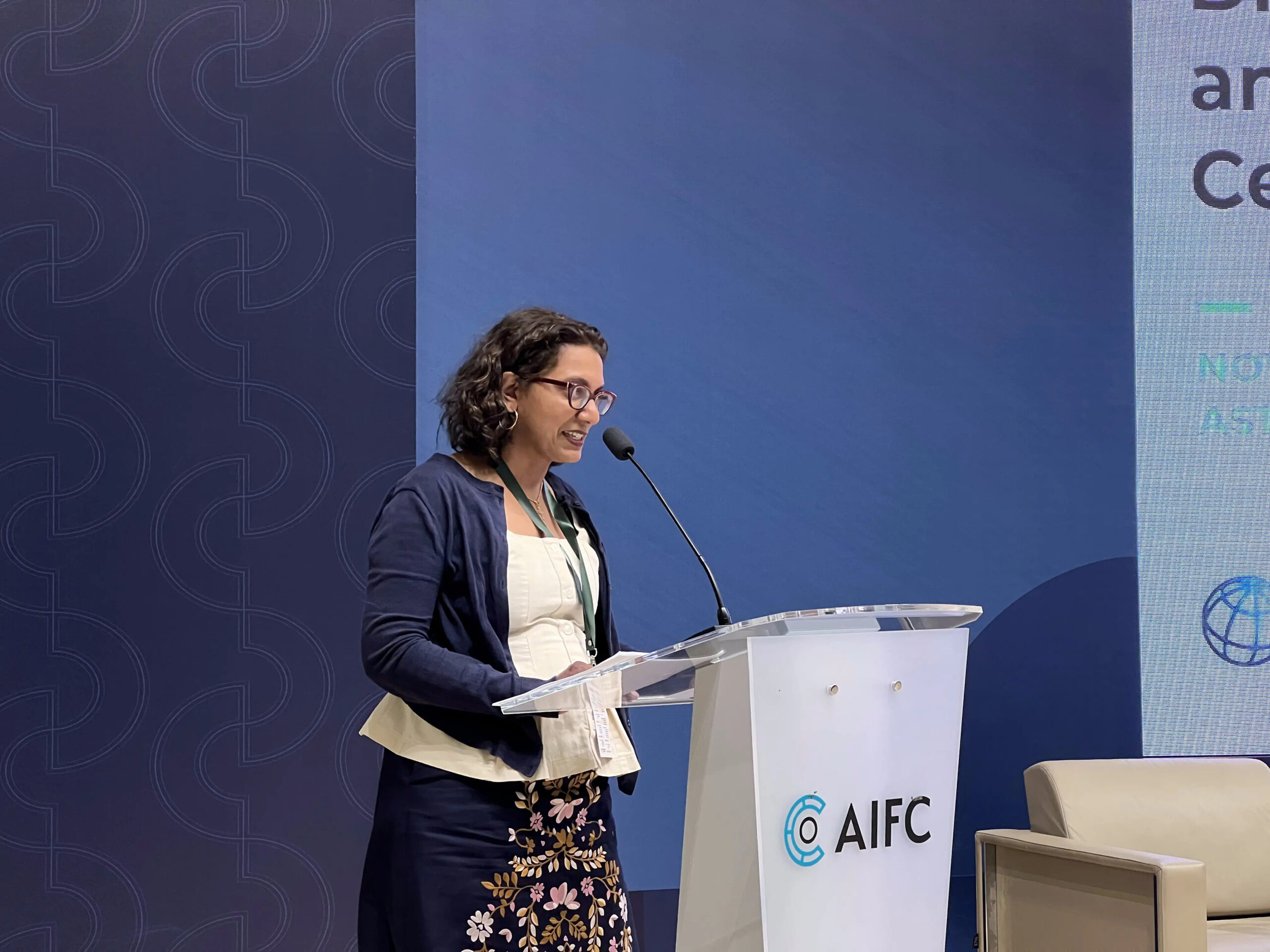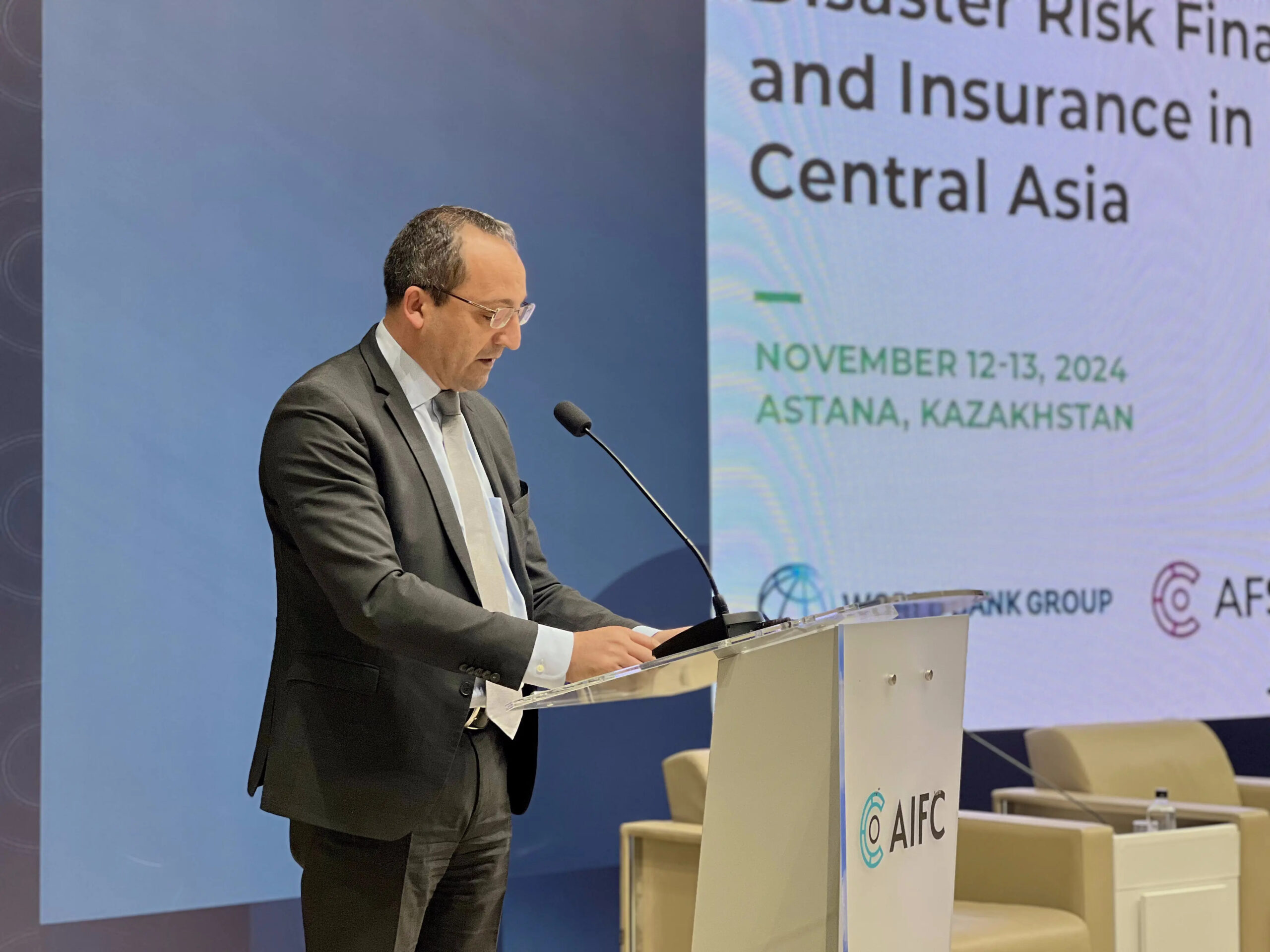ASTANA — A two-day regional conference on Disaster Risk Financing and Insurance (DRFI) in Central Asia, organized by the World Bank and the Astana Financial Services Authority (AFSA), began in the capital on Nov. 12. Focused on strengthening the region’s disaster resilience, the event brought together government officials, financial regulators and insurance experts to discuss practical financial solutions for mitigating disaster risks.

Renat Bekturov, the Astana International Financial Centre (AIFC) Governor, emphasizes the conference’s role as a collaborative platform to advance disaster resilience. Photo credit: AFSA’s press service
Astana International Financial Centre (AIFC)’s Governor, Renat Bekturov, opened the conference, emphasizing the event’s role as a collaborative platform to advance disaster resilience.
“According to the UN Economic and Social Commission for Asia and the Pacific, disasters over the past fifty years have claimed approximately 64,000 lives across North and Central Asia, affected over 20 billion people, and caused damages exceeding $23 billion,” he said.
Bekturov noted the rising climate risks in areas including the Aral Sea Basin and North Kazakhstan and regions of Uzbekistan, Turkmenistan, and the Kyrgyz Republic, highlighting the conference’s focus on risk-based budgeting and the use of technology for disaster resilience.
Collaborative and financial strategies for resilience
According to World Bank Operations Manager Indu John-Abraham, financial resilience in Central Asian countries is insufficient, as available funding does not fully cover post-disaster costs.
“In fact, across Central Asia, annual losses from natural disasters in our client countries exceed $3.5 billion from natural disasters in direct damages alone,” she said.
The World Bank analysis highlights a funding gap across the region. For example, in Tajikistan, the gap can exceed $400 million annually and reach up to $1.5 billion for large disasters. In Uzbekistan, this gap may exceed $1 billion yearly and rise to $15 billion for major events.

World Bank Operations Manager Indu John-Abraham. Photo credit: Nagima Abuova / The Astana Times
“Today Central Asia faces a financial shortfall in disaster preparedness (…) With shallow insurance markets, the funding gaps may require budget reallocation, borrowing, or donor aid, likely crowding out much-needed spending on education and healthcare or leaving critical infrastructure unrepaired,” said John-Abraham.
Ambassador of the Swiss Confederation to Kazakhstan and Tajikistan Salman Bal highlighted the need for regional cooperation and private sector engagement in disaster resilience. He noted that Central Asian countries facing similar climate risks, such as floods and earthquakes, can improve preparedness through shared experiences and risk-sharing mechanisms.

Ambassador of the Swiss Confederation to Kazakhstan and Tajikistan Salman Bal highlights the need for regional cooperation and private sector engagement in disaster resilience. Photo credit: Nagima Abuova / The Astana Times
“Disasters in one country often mirror or forewarn similar events in neighboring ones,” he said, referring to recent floods in Kazakhstan that displaced over 100,000 people.
Bal called for a framework encouraging private sector participation, which, according to Bal, would ease the financial burdens on governments. “Of course, for the private sector to play its part, the right framework conditions need to be in place,” he added.
Bal also noted Switzerland’s contributions, drawing attention to Swiss insurers like Swiss Re and Zurich Insurance, which offer advanced tools for risk assessment.
Building financial resilience through multi-tiered insurance models
Martin Melecky, a Lead Economist at the Finance, Competitiveness and Innovation Global Practice at the World Bank, noted the developmental setbacks caused by uninsured disasters in the region.

World Bank Operations Manager Indu John-Abraham. Photo credit: Nagima Abuova / The Astana Times
Citing historical and recent disasters, he displayed how low insurance coverage in Central Asia—covering only about 1% of GDP compared to 10% globally—deepens economic damage, as governments often resort to borrowing or reallocating funds from essential sectors such as education and healthcare. “Without additional financial tools, governments are forced to shift resources away from critical sectors, which only deepens the socioeconomic impact of these crises.”
He advocated a multi-layered insurance approach, combining local and global resources through public-private partnerships (PPP) and insurance pools to distribute financial risk.
Vice Chairperson of Kazakhstan’s Agency for Regulation and Development of Financial Market, Mariya Khajiyeva, provided insights into Kazakhstan’s post-disaster recovery efforts. She cited the government’s extensive support for rebuilding efforts after recent floods, in which 17,603 properties were damaged. In four months, 2,642 new homes were built across six regions, 5,767 homes and apartments were purchased on the secondary market, and an additional 9,000 homes were repaired—all funded through government resources.
Khajiyeva mentioned that Kazakh businesses played a substantial role, contributing 260 billion tenge (US$524.4 million) in sponsorship funds, alongside the 137 billion tenge (US$276 million) allocated from the state budget.
However, she also noted that only 3.2% of residential properties have insurance coverage against natural disasters, calling for a multi-tiered protection system that would engage individuals, insurers and international reinsurers.
“The last earthquake in Almaty sparked public interest in insurance. Unfortunately, this interest tends to rise only after catastrophic events, then fades within six months to a year. People often react to immediate threats but lose motivation afterward, making it challenging for us to engage with the public. However, our insurance organizations are working to develop effective protection systems and offer accessible and understandable insurance products,” Khajiyeva said.
The conference was organized with support from the World Bank’s Risk Finance Umbrella Program, with contributions from the United Kingdom’s Foreign, Commonwealth and Development Office (FCDO), Swiss State Secretariat for Economic Affairs (SECO) and United States Agency for International Development (USAID).


